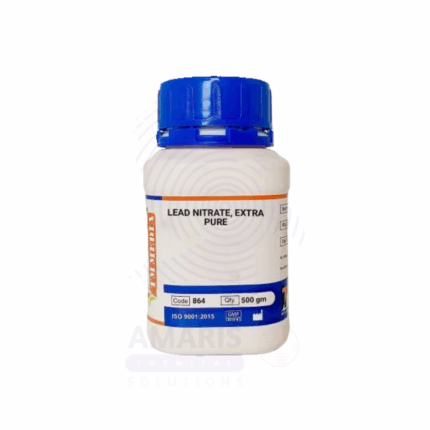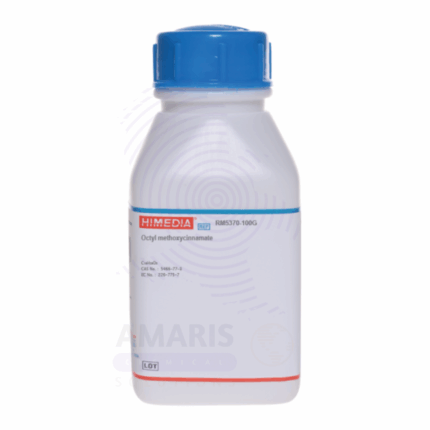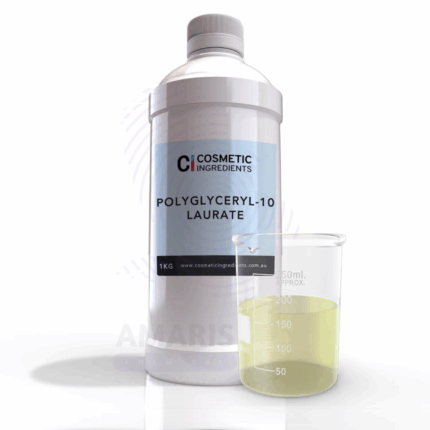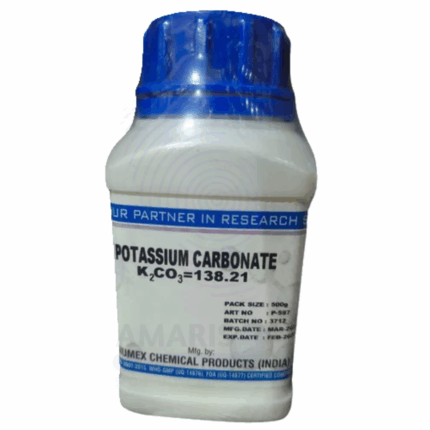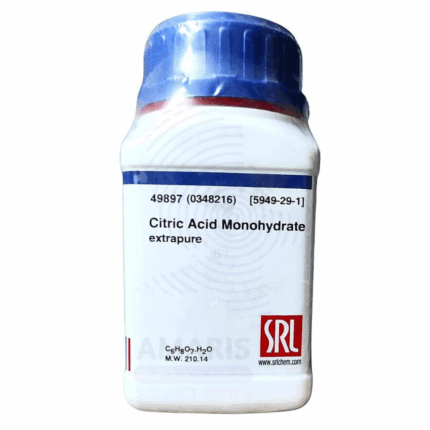
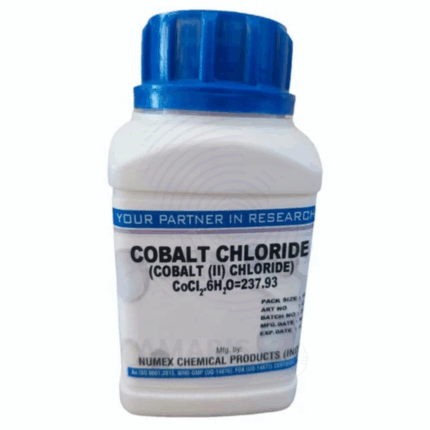
Citronella Extra Pure
$ 18.05 Original price was: $ 18.05.$ 17.98Current price is: $ 17.98.
Citronella Extra Pure is a laboratory-grade essential oil distilled primarily from Cymbopogon species, known for its strong, lemon-like aroma and high content of citronellal, geraniol, and citronellol. In lab settings, it is used in analytical chemistry, fragrance analysis, natural product research, and biological assays due to its volatile organic profile. The extra pure grade ensures the oil is free from synthetic additives and contaminants, offering consistent performance in both qualitative and quantitative studies. It also serves as a reference standard in olfactory testing and is handled with care due to its high volatility and sensitivity to light and air.
Citronella Extra Pure
Primary Uses
- Natural Product Research
- Commonly studied in phytochemistry and essential oil analysis for its content of citronellal, geraniol, and citronellol.
- Bioassay Experiments
- Used in insect repellency tests to evaluate its effectiveness against mosquitoes and other insects.
- Antimicrobial Activity Testing
- Evaluated in microbiological labs for its antibacterial and antifungal properties, especially against gram-positive bacteria.
- Chromatography Reference Standard
- Acts as a natural volatile organic compound (VOC) in GC-MS and TLC experiments involving essential oil components.
Secondary Uses
- Olfactory Studies
- Used in sensory testing and aromatherapy compound analysis in educational settings or research on human perception of smells.
- Solubility & Partition Testing
- Included in solvent-partitioning studies to assess its behavior in different polar/non-polar systems.
- Green Chemistry Demonstrations
- Showcased as an example of a plant-derived, biodegradable compound in labs focused on sustainable chemistry.
- Formulation Base in Experimental Repellents
- Used in the development and testing of experimental formulations for repellents and personal care products.
Basic Identification Attributes
Chemical Name: Citronella Oil (Extra Pure)
CAS Number: 8000-29-1
HS Code: 3301.29.41
Molecular Composition: Mixture – primarily citronellal, geraniol, citronellol
Synonyms: Citronella essential oil, Cymbopogon oil
2. Physical & Chemical Properties
Appearance: Pale yellow to brownish-yellow oily liquid
Odor: Strong, characteristic lemon-like scent
Solubility: Insoluble in water; soluble in alcohol, fixed oils, and organic solvents
Flash Point: ~75°C (closed cup)
Boiling Range: 200–230°C (approx.)
Refractive Index (20°C): ~1.470–1.490
Specific Gravity (25°C): 0.880–0.910
3. Safety & Hazard Attributes
GHS Classification:
H315: Causes skin irritation
H317: May cause allergic skin reaction
H410: Very toxic to aquatic life with long-lasting effects
NFPA Ratings:
Health: 1
Flammability: 2
Reactivity: 0
First Aid Measures:
Inhalation: Move to fresh air; seek medical attention if irritation persists
Skin/Eyes: Wash with soap and water; rinse eyes thoroughly
Ingestion: Rinse mouth, do not induce vomiting—seek medical help
4. Storage & Handling Attributes
Storage Conditions:
Store in a tightly sealed container away from light and heat
Keep in a well-ventilated, dry, cool area
Container Type: Amber glass bottles or sealed HDPE containers
Stability: Stable under normal conditions
Incompatible Materials: Strong oxidizers
Shelf Life: Up to 2 years if stored properly
5. Regulatory & Compliance Attributes
EINECS Number: 294-954-7
IFRA Guidelines: Restricted concentrations in perfumes and skin products
FDA/GRAS: Recognized as safe in small amounts for flavoring
6. Applications in Laboratory & Industry
Laboratory Use:
Natural repellent studies
Extraction and distillation experiments
Antimicrobial testing
Other Industries:
Perfume and fragrance formulation
Natural insect repellents
Soap and cosmetic manufacturing
Aromatherapy and wellness products
PPE Required:
Lab coat
Safety goggles
Nitrile gloves
Work in a fume hood if available
Handling:
Avoid inhaling vapors.
Prevent contact with eyes, skin, and clothing.
Keep away from open flames or heat sources.
Do not eat, drink, or smoke in the work area.
Storage:
Store in a cool, well-ventilated place.
Keep container tightly closed and away from light and ignition sources.
Avoid strong oxidizers.
FIRST AID MEASURES
Inhalation:
Remove to fresh air.
Seek medical attention if symptoms like dizziness or irritation occur.
Skin Contact:
Wash with soap and water.
Remove contaminated clothing.
If irritation or redness persists, seek medical advice.
Eye Contact:
Rinse immediately with water for at least 15 minutes.
Lift eyelids to ensure thorough flushing.
Get medical attention if discomfort continues.
Ingestion:
Rinse your mouth thoroughly.
Do not induce vomiting.
Seek immediate medical attention.
FIREFIGHTING MEASURES
Flammability:
Flammable – Vapors may form explosive mixtures with air.
Suitable Extinguishers:
CO₂
Dry chemical
Alcohol-resistant foam
Fire Hazards:
May emit irritating or toxic fumes upon combustion (e.g., carbon monoxide, carbon dioxide).
Containers may rupture under fire conditions.
Firefighting Gear:
Use self-contained breathing apparatus (SCBA).
Wear full protective gear.


 Acidulants
Acidulants Antioxidants
Antioxidants Nutraceutical Ingredients (food)
Nutraceutical Ingredients (food)
 Collectors
Collectors Dust Suppressants
Dust Suppressants Explosives and Blasting Agents
Explosives and Blasting Agents Flocculants and Coagulants
Flocculants and Coagulants Frothers
Frothers Leaching Agents
Leaching Agents pH Modifiers
pH Modifiers Precious Metal Extraction Agents
Precious Metal Extraction Agents
 Antioxidants(plastic)
Antioxidants(plastic) Colorants (Pigments, Dyes)
Colorants (Pigments, Dyes) Fillers and Reinforcements
Fillers and Reinforcements Flame Retardants
Flame Retardants Monomers
Monomers Plasticizers
Plasticizers Polymerization Initiators
Polymerization Initiators Stabilizers (UV, Heat)
Stabilizers (UV, Heat)
 Antifoaming Agents
Antifoaming Agents Chelating Agents
Chelating Agents Coagulants and Flocculants
Coagulants and Flocculants Corrosion Inhibitors
Corrosion Inhibitors Disinfectants and Biocides
Disinfectants and Biocides Oxidizing Agents
Oxidizing Agents pH Adjusters
pH Adjusters Scale Inhibitors( water)
Scale Inhibitors( water)
 Antioxidants(cosmetic)
Antioxidants(cosmetic) Emollients
Emollients Fragrances and Essential Oils
Fragrances and Essential Oils Humectants
Humectants Preservatives
Preservatives Surfactants(cosmetic)
Surfactants(cosmetic) Thickeners
Thickeners UV Filters
UV Filters
 Fertilizers
Fertilizers Soil Conditioners
Soil Conditioners Plant Growth Regulators
Plant Growth Regulators Animal Feed Additives
Animal Feed Additives Biostimulants
Biostimulants Pesticides (Herbicides, Insecticides, Fungicides)
Pesticides (Herbicides, Insecticides, Fungicides)
 Active Pharmaceutical Ingredients (APIs)
Active Pharmaceutical Ingredients (APIs) Excipients
Excipients Solvents(pharmaceutical)
Solvents(pharmaceutical) Antibiotics
Antibiotics Antiseptics and Disinfectants
Antiseptics and Disinfectants Vaccine Adjuvants
Vaccine Adjuvants Nutraceutical Ingredients (pharmaceutical)
Nutraceutical Ingredients (pharmaceutical) Analgesics & Antipyretics
Analgesics & Antipyretics
 Analytical Reagents
Analytical Reagents Chromatography Chemicals
Chromatography Chemicals Spectroscopy Reagents
Spectroscopy Reagents Molecular Biology Reagents
Molecular Biology Reagents Biochemical Reagents
Biochemical Reagents Inorganic and Organic Standards
Inorganic and Organic Standards Laboratory Safety Chemicals
Laboratory Safety Chemicals Specialty Laboratory Chemicals(Special Laboratory Equipment)
Specialty Laboratory Chemicals(Special Laboratory Equipment)
 Demulsifiers
Demulsifiers Hydraulic Fracturing Fluids
Hydraulic Fracturing Fluids Scale Inhibitors(oil)
Scale Inhibitors(oil) Surfactants(oil)
Surfactants(oil) Drilling Fluids
Drilling Fluids
 Dyes and Pigments
Dyes and Pigments Bleaching Agents
Bleaching Agents Softening Agents
Softening Agents Finishing Agents
Finishing Agents Antistatic Agents
Antistatic Agents
 Admixtures
Admixtures Waterproofing Agents
Waterproofing Agents Sealants and Adhesives
Sealants and Adhesives Curing Compounds
Curing Compounds Concrete Repair Chemicals
Concrete Repair Chemicals Anti-Corrosion Coatings
Anti-Corrosion Coatings
 Surfactants(cleaning)
Surfactants(cleaning) Builders
Builders Enzymes
Enzymes Solvents (Cleaning)
Solvents (Cleaning) Fragrances
Fragrances
 Electronic Chemicals
Electronic Chemicals Catalysts
Catalysts Lubricants
Lubricants Photographic Chemicals
Photographic Chemicals Refrigerants
Refrigerants Automotive chemicals
Automotive chemicals Pyrotechnic Chemicals
Pyrotechnic Chemicals
 Biodegradable Surfactants
Biodegradable Surfactants Bio-based Solvents
Bio-based Solvents Renewable Polymers
Renewable Polymers Carbon Capture Chemicals
Carbon Capture Chemicals Wastewater Treatment Chemicals
Wastewater Treatment Chemicals
 Pigments
Pigments Solvents(paint)
Solvents(paint) Specialty Coatings
Specialty Coatings Binders/Resins
Binders/Resins Additives
Additives Driers
Driers Anti-Corrosion Agents
Anti-Corrosion Agents Functional Coatings
Functional Coatings Application-Specific Coatings
Application-Specific Coatings
 Fresh Herbs
Fresh Herbs Ground Spices
Ground Spices Whole Spices
Whole Spices Spice Blends
Spice Blends Dried Herbs
Dried Herbs
 Leavening Agents
Leavening Agents Dough Conditioners
Dough Conditioners Flour Treatments
Flour Treatments Fat Replacers
Fat Replacers Decoratives
Decoratives Preservatives(baking)
Preservatives(baking)
 Plasticizers & Softeners
Plasticizers & Softeners Reinforcing Agents
Reinforcing Agents Adhesion Promoters
Adhesion Promoters Vulcanizing Agents
Vulcanizing Agents Antidegradants
Antidegradants Blowing Agents
Blowing Agents Fillers & Extenders
Fillers & Extenders Accelerators & Retarders
Accelerators & Retarders


